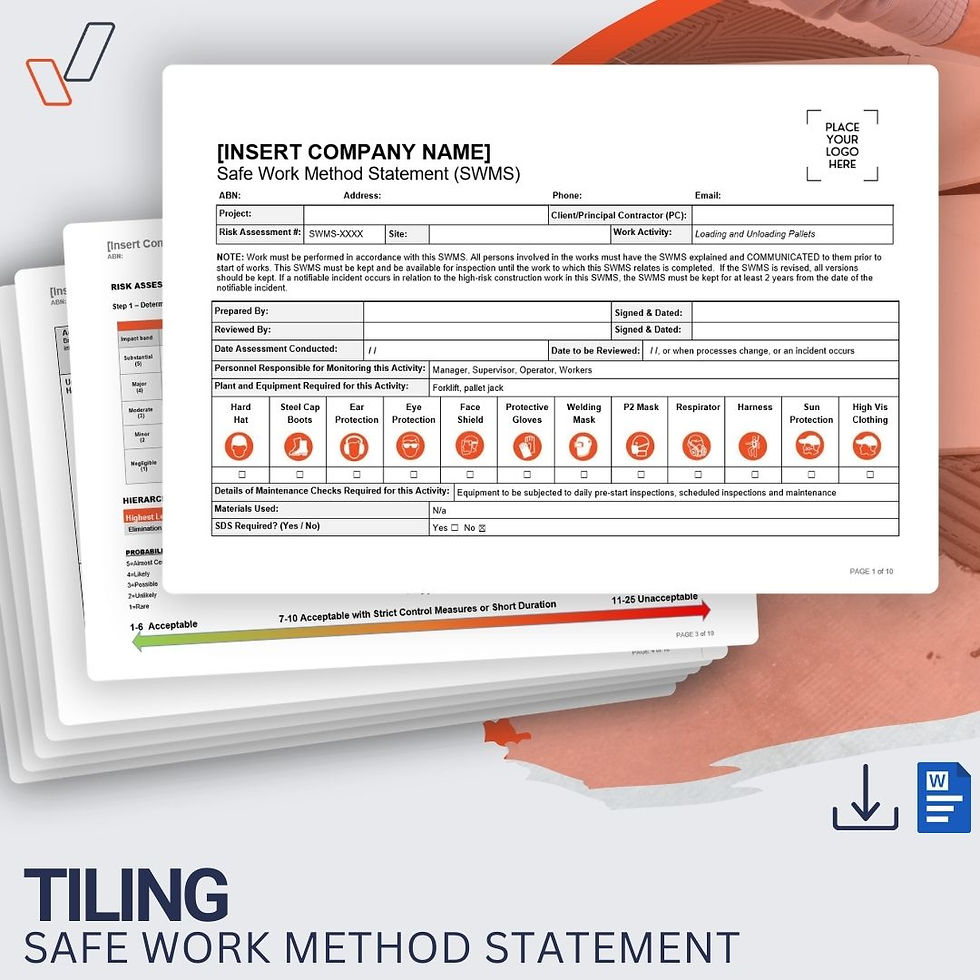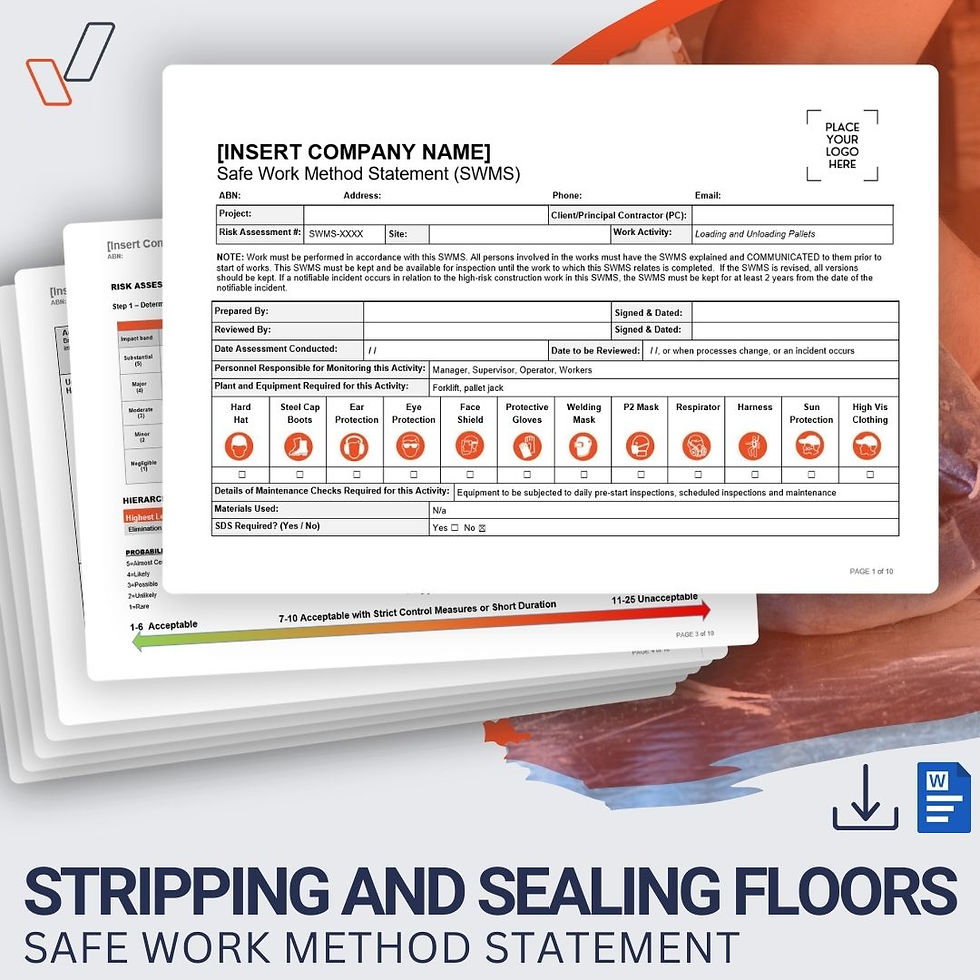This 16-page Painting Safe Work Method Statement (SWMS) provides the typical safety controls and possible hazards associated with interior and exterior painting tasks across various environments. It covers everything from preparation to clean-up, including working at heights and using hazardous substances.
Pre-filled and ready to use, this SWMS has been developed by Australian WHS experts to help your business stay compliant with Work Health and Safety obligations. It’s suitable for use in all states and territories and is fully editable in Microsoft Word - so you can easily add your company name, logo, and site-specific details.
Who This SWMS Is For
Residential and commercial painting contractors
Property maintenance and facility management companies
Renovation and building services
Strata and body corporate services
Industrial painting operators
Schools, councils, and government agencies conducting internal repainting works
What This SWMS Covers
Conducting pre-operational safety checks and equipment inspections
Managing risks related to chemical exposure and hazardous substances
Setting up drop sheets, access equipment, and perimeter controls
Manual handling procedures to prevent musculoskeletal injuries
Preparing surfaces and mixing paint using brushes, rollers, or spray guns
Safe use of ladders, mobile scaffolds, and elevated platforms
Working at heights with fall arrest systems and exclusion zones
Use of generators, power tools, compressors, and airless spray equipment
Dust control, PPE use (e.g. respirators, gloves, high-vis), and heat stress management
Environmental protection measures including overspray management
Packing down, cleaning up, and proper disposal/storage of chemicals
Emergency procedures, first aid, and incident response
What’s Included in Your Template
High Risk Construction Work (HRCW) selection table
Risk assessment methodology and risk rating calculator
Detailed step-by-step procedures for each painting task
Hazards and corresponding control measures
PPE checklist
Tools, plant, and equipment list
References to relevant WHS legislation, standards, and codes
Worker sign-off section for compliance tracking
This SWMS template for Painting is an invaluable tool for quickly and effectively documenting your WHS systems. Designed for swift editing and customisation, it adapts easily to your operational needs - making it an essential part of your safety management toolkit.
Get your Painting SWMS today and start using it instantly! Save time, stay safe, and help your business stay compliant with our expert-developed templates.
Painting SWMS
We accept the following payment methods:
➡️ Pre-filled and ready to use
➡️ Created by WHS experts, aligned with Australian WHS legislation
➡️ Suitable for all Australian states and territories
➡️ Fully editable Microsoft Word format
➡️ Instant delivery via email
➡️ Free list of relevant legislation & codes of practice (valued at $19.95)
➡️ Easy customisation instructions included
➡️ Pay once, use it as many times as you need
➡️ 12 months free phone and email support


















